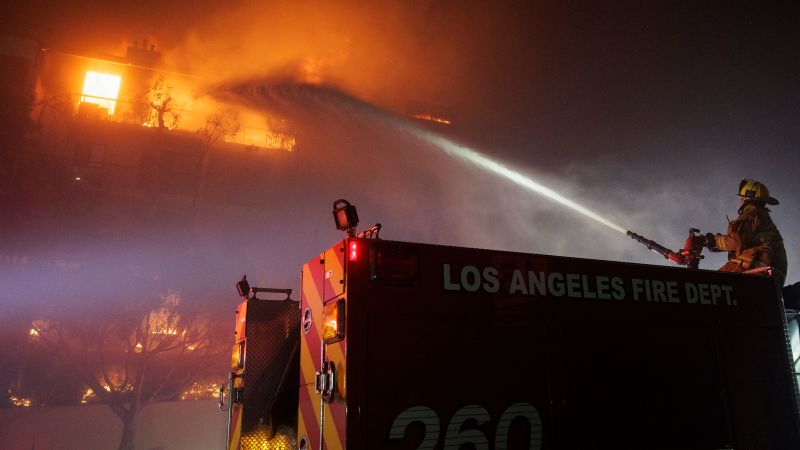Less than a month before fires swept across Los Angeles, a group of longtime firefighters gathered at City Hall to plead for more resources. They were at a “breaking point,” one said. Another revealed that million-dollar fire trucks sat idle because budget cuts had shrunk the number of mechanics available to fix them.
The firefighters’ concerns over resources seemed to be on point, as a CNN analysis of the most recent data available from the 10 largest US cities and other comparable departments shows the Los Angeles Fire Department (LAFD) is less staffed than almost any other major city, leaving it struggling to meet both daily emergencies and larger disasters like wildfires.
Despite being located in one of the most fire-prone areas in the country, the LAFD has less than one firefighter for every 1,000 residents, compared to cities like Chicago, Dallas, and Houston, where staffing is closer to two firefighters for the same number of residents. Of the largest cities, only San Diego has fewer firefighters per capita.
Experts have said no fire department in the world could have been fully prepared to take on the perfect storm of conditions that resulted in LA’s devastating blazes, which have burned over 40,000 acres, destroyed over 12,000 structures, and caused at least 24 deaths.
LA’s firefighters were joined by crews from across the state, including from the Los Angeles County Fire Department, which covers areas outside the city, including hard-hit Altadena. But images of residents in some neighborhoods trying to save homes with garden hoses and no firefighters in sight have sparked a new debate over whether city officials should have planned better and invested more in the LAFD, and what should be done to become better positioned for the next emergency.
One of the speakers at the Fire Commission meeting last month was City Councilmember Traci Park, who warned that resources were being strained “beyond the brink” despite a dangerous increasing risk of wildfire. Just 21 days later, the Pacific Palisades community in her council district became the epicenter of one of the fires.
In a memo from the end of last year, LA Fire Chief Kristin Crowley also expressed concerns that the fire department’s staffing levels were half the size that a professional fire department should be, based on benchmarks recommended by the National Fire Protection Association. The city has fewer fire stations today than it did in the 1960s, despite a quadrupled call volume.
The fire union says the neglect of the agency is a problem that predates the current budget cycle and is not just a result of the current mayor or budget decisions. “This isn’t about one budget cycle. It’s not about a single mayor. This has been the case for decades. We have been speaking about it for years now,” said Freddy Escobar, the union president.
In 2011, Los Angeles placed near the bottom in a ranking of fire department staffing for the country’s 40 largest cities. The city’s fire department foundation issued a report last year highlighting the struggles, including the number of stations without enough water and firefighters forced to use only one washing machine for 16 people to clean their uniforms.

